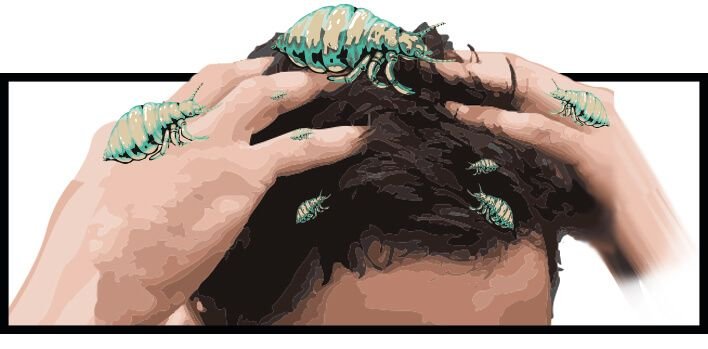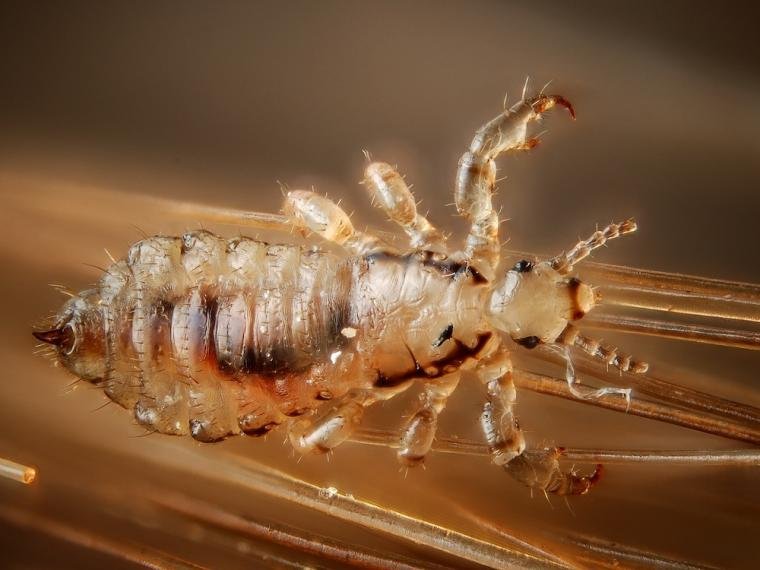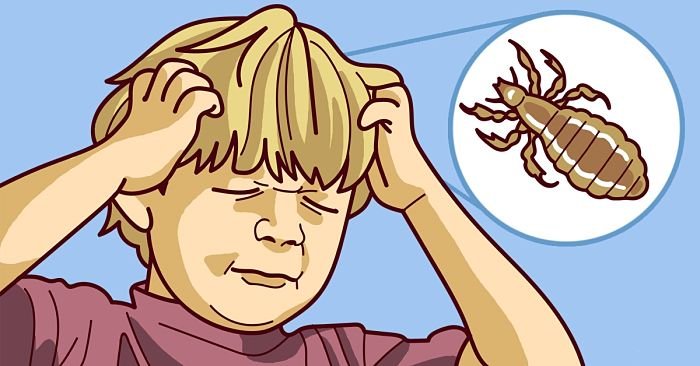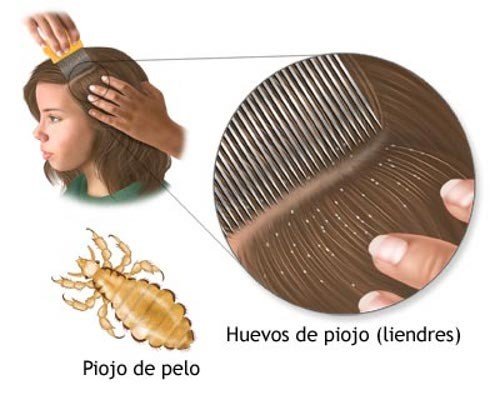Hello steemits, I bring you this post about lice infestation, a situation that is very common in most people.
The lice
They are parasitic insects of grey color and measure about 3 millimeters. They feed on other living things, such as humans, and affect both children and adults. Their survival outside the human body is very short, no more than two days, because they need to ingest blood frequently.
There are different types of lice, such as body lice (pediculus corporis), head lice (pediculus capitis) and pubic lice (pediculus pubis). However, in this post we will focus on the most frequent ones.
Head lice
They do not affect domestic animals and do not have wings. They can be found on the back of the neck or behind the ears and live for 20 to 30 days. After maturing for two weeks, fertilized females lay 4 to 10 eggs each day, called nits, which are like small, shiny, oval, grey bodies that stick to the hair near the scalp. After about seven days, they hatch and have 24 hours to start feeding on human blood.
They need a small amount of blood to live; for this, they inject their saliva full of anticoagulant, thus facilitating the escape of blood from the host, causing itching, such itching causes stress and discomfort and even bacterial infections. They move quickly through dry, clean and thin hair, helping them to reach the scalp to feed and lay eggs.
They have the ability to spread from person to person only by direct contact or by the sharing of personal effects, such as hats, caps or combs.
Diagnosis

The diagnosis of head lice can be determined after finding a live young or adult head lice in the hair or scalp, or after detecting one or more nits on the hair shaft.
If no live lice are seen or if you see nits that are more than 1/4 inch from the scalp, the infection is probably no longer active. Nits must be removed to prevent recurrence.
The main method of checking this is to comb the hair or run a fine-toothed comb over white paper: the eggs or nits will fall on the paper and you will see small white dots. If there are eggs, there will most likely be lice. Dandruff and nits are similar, but nits get caught in the hair and dandruff does not.
The medical examination can be done with a magnifying glass and look for nits with a special light, called Wood's light, which makes the nits look pale blue.
Treatment

Disinfect clothes, combs, sheets, toys and other objects.
Cut the hair, to simplify the task of deworming.
Apply pediculicide lotions based on pyrethrins to dirty, dry hair for 10 to 15 minutes with the head wrapped in a bag or towel. Over time, apply anti-parasite shampoos, rinse and use a fine comb to help remove dead lice and nits from the hair. It is recommended to use these medications only as prescribed, as over application may cause redness or irritation of the skin and even resistance.
The use of vinegar helps the nits to unhook from the hair. Also tree oil or citronella oil, which is used as an insect repellent.
Eucalyptus and apple vinegar infusions can be used. Lice are bothered by the smell of eucalyptus.
Use blends of oils when spreading them on your head to help you slide them out of your hair.
Recommendations
Use personal care measures, such as checking your hair regularly to avoid reinfection.
Avoid wearing combs, hats, scarves or any other object with which the affected person has been in contact.
Vacuuming all over the house, on stuffed animals and objects